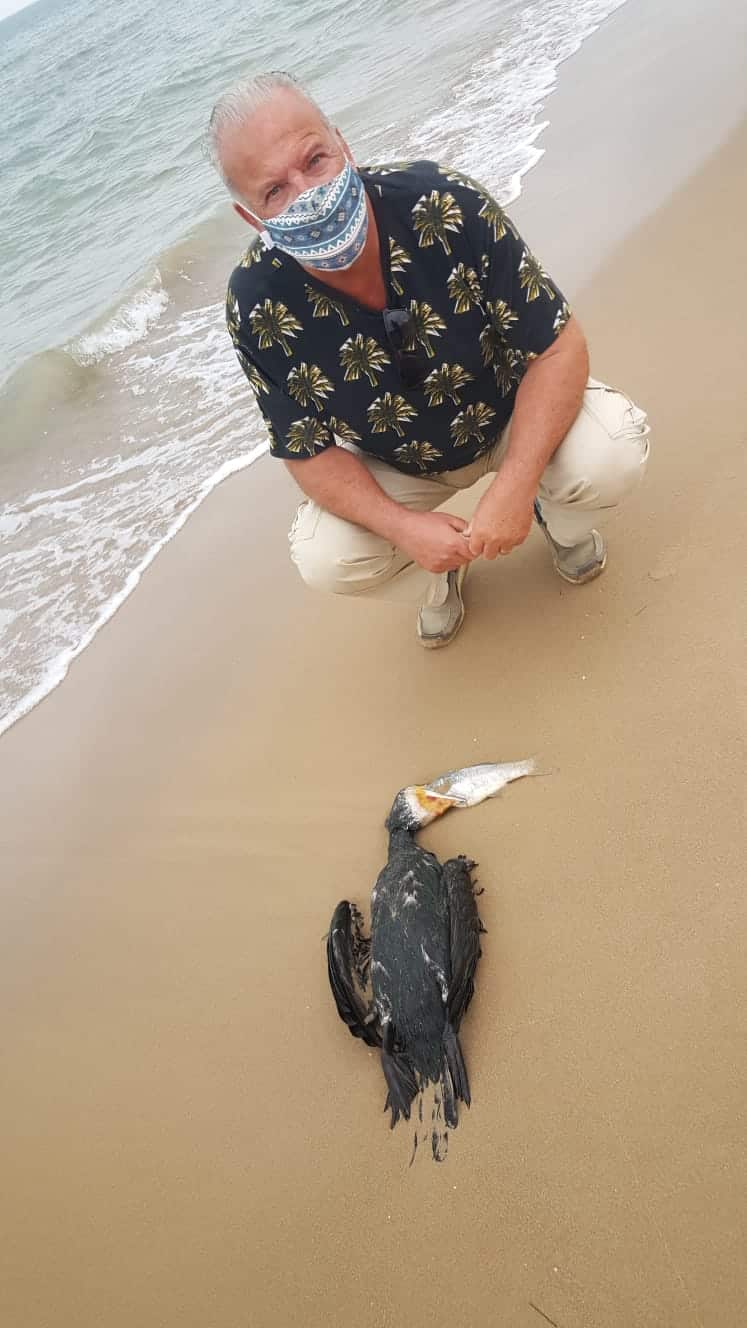THE discovery of a dead cormorant on the shore of the Mediterranean sea in Guardamar – choked on a sea bass – lead reporter Andrew Atkinson to La Manga del Mar Menor, and the volcanic islands of Grosa and El Farallón.
Competition for food between the Mediterranean shag, the great cormorant and artisanal fisheries lead to a case study that included the Instituto Murciano de Investigación y Desarrollo Agrario y Alimentario (IMIDA), Puerto de San Pedro del Pinatar.
The Mediterranean shag and the great cormorant are syntopic birds, in an area encompassing Grosa Island and the Mar Menor coastal lagoon.
Diet composition both birds were studied through pellet analysis and otolith identification, with competition for fish resources between the two seabirds and with local artisanal fisheries assessed.
Shags preyed preferentially on small pelagic fish, and great cormorants mainly consumed demersal fish. Shag diet consisted of marine fish strictly, but great cormorant fed in all the available environments in the study area, including marine, transitional (coastal lagoon) and freshwater reservoirs.
The great dissimilarity observed between shag and great cormorant diet composition showed no competition between them. The low shag population density and fishing effort in their foraging area suggested no competition with fisheries. Conversely, great cormorant population density in the study area was very high, and they foraged on fish of high commercial value.
Competition between great cormorant and artisanal fisheries only affected some of the less abundant species fished.
Cormorants belong to the family Phalacrocoracidae and there are 40 species of cormorants and shags.

Excellent fishers with a diet of fish, eels and sea snakes. Unlike many other marine birds, Cormorants dive from the surface of the water, rather than from a height, and some species have been recorded diving to depths of around 45 metres.
Cormorants are seen along the Mediterranean coast in Spain, including Torrevieja and Guardamar.
Out in the open sea, 2.5km from La Manga del Mar Menor, the volcanic islands of Grosa and El Farallón, can be seen with a combined surface area of 17.5 hectares and a steep terrain up to 90 metres.
Both islands were declared Protected Wildlife Reserve in 1992, Protection Area for Local Wildlife and Site of Community Importance in 1995 and Special Bird Protected Area in 2000.
The islands were also included in the Red Natura network and categorized as a specially protected area of Mediterranean importance.
Both islands were home to Berber Pirates in the 18th century. Until the year 2000, they were used by the Spanish Armada to train combat and explosive ordnance disposal divers.
In 2000, the islands were donated to the Region of Murcia Government, which categorized them as a biological territory of restricted access to preserve delicate species such as audouin gulls, petrels and tufted cormorant, among others.
In the seabed of these two islands divers found Roman and Phoenician shipwrecks, an example is the bajo de la campana, a 5th century BC Phoenician ship that sunk with a significant tin and lead cargo, along with valuable pieces, including African elephant tusks with inscriptions exhibited at the National Museum of Underwater Archeology of Cartagena.






